The Hidden Financial Trap Most Property Owners Don’t See Coming
Picture this: A severe storm damages your Houston property, causing $200,000 in repairs. You breathe a sigh of relief knowing you have insurance, only to discover your claim payment is reduced by tens of thousands of dollars due to a coinsurance penalty. This scenario plays out for countless property owners who unknowingly violated their policy’s coinsurance clause—a provision that requires maintaining coverage equal to a specific percentage of their property’s value. If you’re facing a reduced insurance payout or worried about potential penalties on future claims, understanding coinsurance requirements and your legal options becomes crucial for protecting your financial future.
💡 Pro Tip: Review your property insurance policy’s coinsurance clause today and compare your coverage limit to 80% of your property’s current replacement cost—this simple check could save you thousands on future claims.
Don’t let coinsurance penalties catch you off guard. Whether you’re dealing with a current claim or safeguarding against future risks, the experienced team at JCE Law Group is ready to lend a helping hand. Reach out today at 504-754-5884 or contact us to ensure your property is fully protected and your rights are upheld.
Understanding Your Rights When Faced with a Texas Property Insurance Lawyer
Texas law provides specific protections for property owners dealing with insurance disputes, including those involving coinsurance penalties. Under the Texas Insurance Code, insurers must clearly explain policy provisions and cannot apply penalties in bad faith or without proper documentation of your property’s value. A Texas property insurance lawyer can help determine whether your insurer properly calculated the penalty and followed all required procedures. Many property owners don’t realize they have the right to challenge their insurer’s valuation methods, dispute the application of coinsurance clauses, or seek compensation when insurers fail to adequately explain these critical policy provisions at the time of purchase.
💡 Pro Tip: Request a detailed written explanation from your insurer showing exactly how they calculated your property’s replacement cost and the resulting coinsurance penalty—this documentation is essential for any potential dispute.
What to Expect: The Timeline for Resolving Coinsurance Penalty Disputes
Resolving a coinsurance penalty dispute follows a predictable timeline, though each case has unique factors that can affect the duration. Understanding this process helps you plan accordingly and take timely action to protect your rights. Most importantly, Texas law sets specific deadlines for challenging insurance decisions, making prompt action essential.
- Initial claim filing and penalty notification: Your insurer typically applies the coinsurance penalty during the initial claim evaluation (1-4 weeks after filing)
- Request for reconsideration: Submit documentation challenging the penalty calculation within 30-60 days of notification
- Appraisal process: If valuation disputes arise, the formal appraisal process can take 60-90 days
- Mediation attempts: Many policies require mediation before litigation, typically scheduled within 90-120 days
- Potential litigation: If necessary, filing suit must occur within two years of the claim denial or underpayment
💡 Pro Tip: Document all communications with your insurer from day one—timestamps on emails and recorded phone calls can prove crucial if disputes about notification timing arise later.
How JCE Law Group Helps Property Owners Fight Unfair Coinsurance Penalties
When facing a substantial coinsurance penalty, having an experienced Texas property insurance lawyer can make the difference between accepting a reduced payout and recovering the full amount you deserve. JCE Law Group understands the complexities of Texas insurance law and has helped numerous Houston property owners successfully challenge unfair penalty applications. Our approach involves thoroughly reviewing your policy language, analyzing your insurer’s valuation methods, and identifying any procedural violations that could invalidate the penalty. We also work with independent appraisers and construction experts to establish accurate replacement cost values that often differ significantly from insurer calculations.
💡 Pro Tip: Before accepting any reduced claim payment, consult a lawyer who can review whether the coinsurance penalty was properly applied—many penalties are reversed upon proper legal challenge.
Decoding Coinsurance: Why 80% Coverage Matters More Than You Think
Most property insurance policies include a coinsurance clause requiring you to maintain coverage equal to at least 80% of your property’s replacement cost. This percentage isn’t arbitrary—it reflects insurers’ calculations about premium collection and risk distribution. When property values increase due to market conditions or improvements, many owners fail to adjust their coverage accordingly, unknowingly falling below the required percentage. A Texas property insurance lawyer frequently sees cases where property owners maintained the same coverage limits for years while their property values doubled, creating massive exposure to coinsurance penalties.
The Mathematical Reality of Coinsurance Penalties
Here’s how the penalty calculation works: If your property’s replacement cost is $500,000 and you only carry $300,000 in coverage (60% instead of the required 80%), your insurer will only pay 75% of any claim (60% ÷ 80% = 75%). On a $100,000 claim, you’d receive just $75,000—a $25,000 penalty for underinsurance. Understanding replacement cost vs actual cash value coverage becomes critical here, as these different valuation methods can dramatically affect both your required coverage amount and potential penalties.
💡 Pro Tip: Schedule annual insurance reviews with your agent to adjust coverage limits based on current construction costs and property improvements—this proactive approach costs far less than potential coinsurance penalties.
Red Flags: When Insurers Misapply Coinsurance Clauses
Not every coinsurance penalty is legitimate or properly calculated. Texas property insurance lawyers regularly identify situations where insurers misapply these clauses to reduce claim payments improperly. Common red flags include using inflated replacement cost estimates to trigger penalties, failing to account for policy endorsements that modify coinsurance requirements, applying penalties to partial losses when the damaged portion was adequately insured, and changing valuation methods between policy issuance and claim time. When these situations arise, property owners have strong grounds to challenge the penalty under Texas Insurance Code Chapter 541 – Unfair Insurance Practices.
Documentation That Protects Against Unfair Penalties
Smart property owners maintain specific documentation that can defeat improper coinsurance penalties. This includes professional appraisals obtained at policy inception, detailed records of all property improvements with costs and dates, correspondence with insurance agents about coverage recommendations, and annual insurance company property valuation statements. When you consult a lawyer about a coinsurance dispute, this documentation often provides the ammunition needed to prove your insurer’s penalty calculation is flawed or that you reasonably relied on their coverage recommendations.
💡 Pro Tip: If your insurance agent ever recommends specific coverage amounts in writing, save that documentation—it can establish that you relied on professional advice when setting coverage limits.
Frequently Asked Questions
Common Concerns About Coinsurance Penalties
Property owners facing coinsurance penalties often share similar concerns about their rights and options. Understanding these common issues helps you make informed decisions about challenging penalties.
💡 Pro Tip: Write down all questions before meeting with an attorney—organized clients often get more comprehensive answers and better outcomes.
Next Steps After Receiving a Penalty Notice
Time is critical when dealing with coinsurance penalties. Taking the right steps immediately after notification can preserve your rights and maximize your recovery options.
💡 Pro Tip: Never accept a reduced payment without getting the insurer’s penalty calculation in writing—verbal explanations often differ from formal documentation.
1. Can I challenge a coinsurance penalty if I relied on my insurance agent’s coverage recommendations?
Yes, if your agent recommended specific coverage amounts that later proved insufficient, you may have grounds to challenge the penalty. Texas courts recognize that property owners reasonably rely on professional insurance advice. Document any coverage discussions with your agent and retain all correspondence about recommended limits.
2. How is replacement cost different from actual cash value for coinsurance calculations?
Replacement cost represents the current price to rebuild your property with similar materials, while actual cash value deducts depreciation. Most coinsurance clauses base requirements on replacement cost, meaning your coverage must equal 80% of rebuilding costs, not the depreciated value. This distinction often creates coverage gaps as properties age.
3. What if my property value increased dramatically due to market conditions beyond my control?
Rapid market appreciation can trigger coinsurance penalties even for diligent property owners. However, insurers must use reasonable valuation methods and cannot retroactively apply inflated values. Challenge any valuation that seems disconnected from market reality at the time you purchased coverage.
4. How long do I have to dispute a coinsurance penalty in Texas?
Generally, you have two years from the date of claim denial or underpayment to file suit. However, many policies require earlier notice of disputes and mandatory mediation or appraisal before litigation. Review your policy’s dispute resolution provisions immediately upon receiving a penalty notice.
5. Can partial losses trigger coinsurance penalties on my entire property?
Yes, most coinsurance clauses apply to partial losses based on your entire property’s value. If you’re underinsured on the total property value, the penalty reduces payment even for small claims. Some policies include agreed value endorsements that suspend coinsurance for partial losses—check if this option exists for your property.
Work with a Trusted Property Insurance Lawyer
Coinsurance penalties can transform reasonable insurance claims into financial disasters, but you don’t have to accept unfair reductions without a fight. Understanding your policy’s requirements, documenting your property’s value, and knowing when to seek legal help protects your investment and ensures fair treatment from insurers. Whether you’re currently facing a penalty or want to prevent future problems, taking proactive steps today safeguards your tomorrow.
Shield your future and avoid hidden pitfalls with coinsurance penalties. The folks at JCE Law Group are just a call away to help secure your peace of mind. Reach out at 504-754-5884 or simply contact us to ensure your property claims are fairly addressed.



